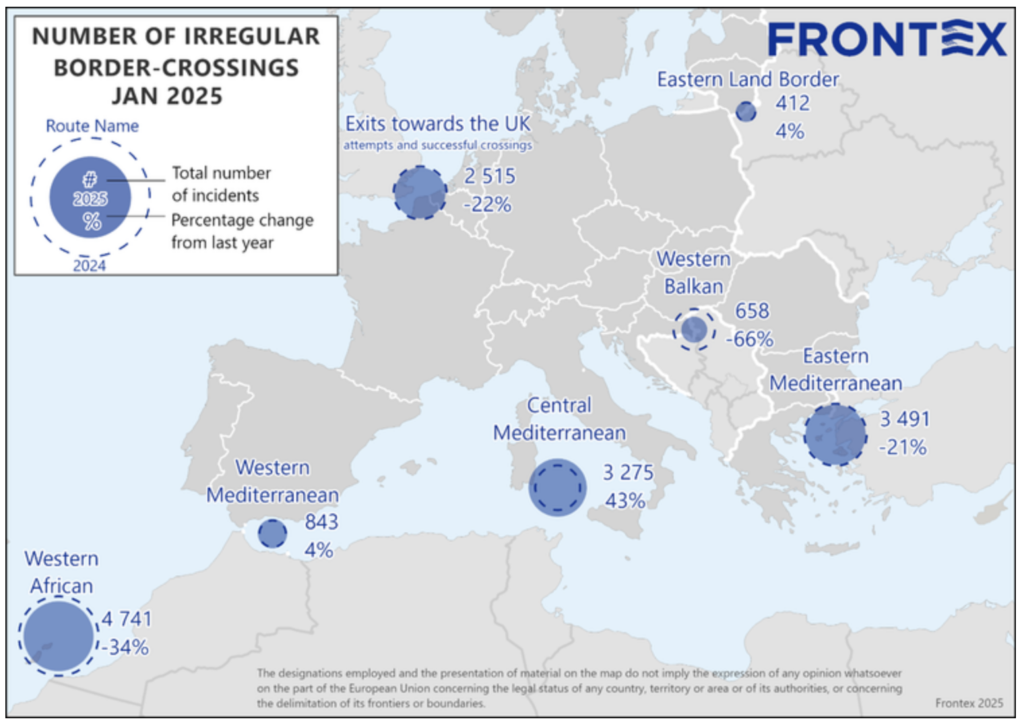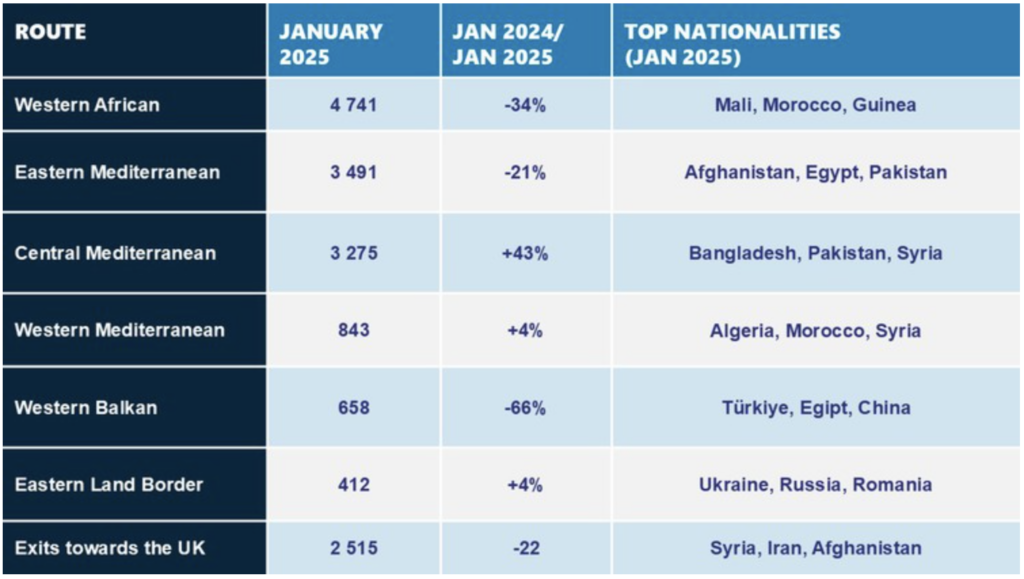Brussels – Frontex data for January are crystal clear: while the general trend shows a general drop in irregular entries into Europe, arrivals from the Central Mediterranean Route are rising, affecting Italy in particular. This contradicts, at least in part, the Meloni government’s rhetoric about declining arrivals.
In a statement published today (Feb. 12), the EU Border and Coast Guard Agency (Frontex) said that in January, illegal entries into the 27 member states dropped by 22 percent compared to the same year-earlier period, at 13,420.

The decline was the greatest on the Balkan Route, where irregular entries dropped by 66 percent compared to a year ago (a total of 658 in the first 31 days of 2025, mainly from China, Egypt, and Turkey). Another significant decrease (-34 percent) was recorded along the West African Route (the one involving the Atlantic coast), which nevertheless remains the busiest and alone accounted for nearly one-third of unauthorized entries in the past 12 months: there were 4,471, mainly from Guinea, Mali, and Morocco. The Eastern Mediterranean Route recorded a 21 percent decrease, with 3,491 entries involving primarily people from Afghanistan, Egypt, and Pakistan.
However, there was an increase mainly on the Central Mediterranean route, particularly concerning Italy. From January 2024 to January 2025, irregular arrivals rose by 43 percent to 3,275. Most migrants on this corridor came from Bangladesh, Pakistan, and Syria. With a +135 percent increase in arrivals compared to the previous year, the dynamic seems to contradict the statements of Premier Giorgia Meloni.
According to calculations by the International Organization for Migration (IOM), 101 went missing in this dangerous part of the sea in the first month of this year. For the whole of 2024, the figure rises to 1,692.

Other, albeit more marginal increases (both by 4 percentage points) occurred on the Western Mediterranean Sea route (to Spain), with 843 landings mainly of Algerians, Moroccans, and Syrians, and on the terrestrial route on the northeastern border of the Union (between the Baltics and Poland), where there were 412 reported irregular entries, mainly Russians and Ukrainians.
Numbers in hand, the border crossings exceeded the over 13,000 entries since there were also 2,515 outbound movements to the UK across the Channel, a -22 percent drop year-on-year.
English version by the Translation Service of Withub





![Il commissario per l'Economia, Valdis Dombrovskis, in conferenza stampa a Strasburgo [12 febbraio 2025]](https://www.eunews.it/wp-content/uploads/2025/02/dombro-250212-120x86.png)

